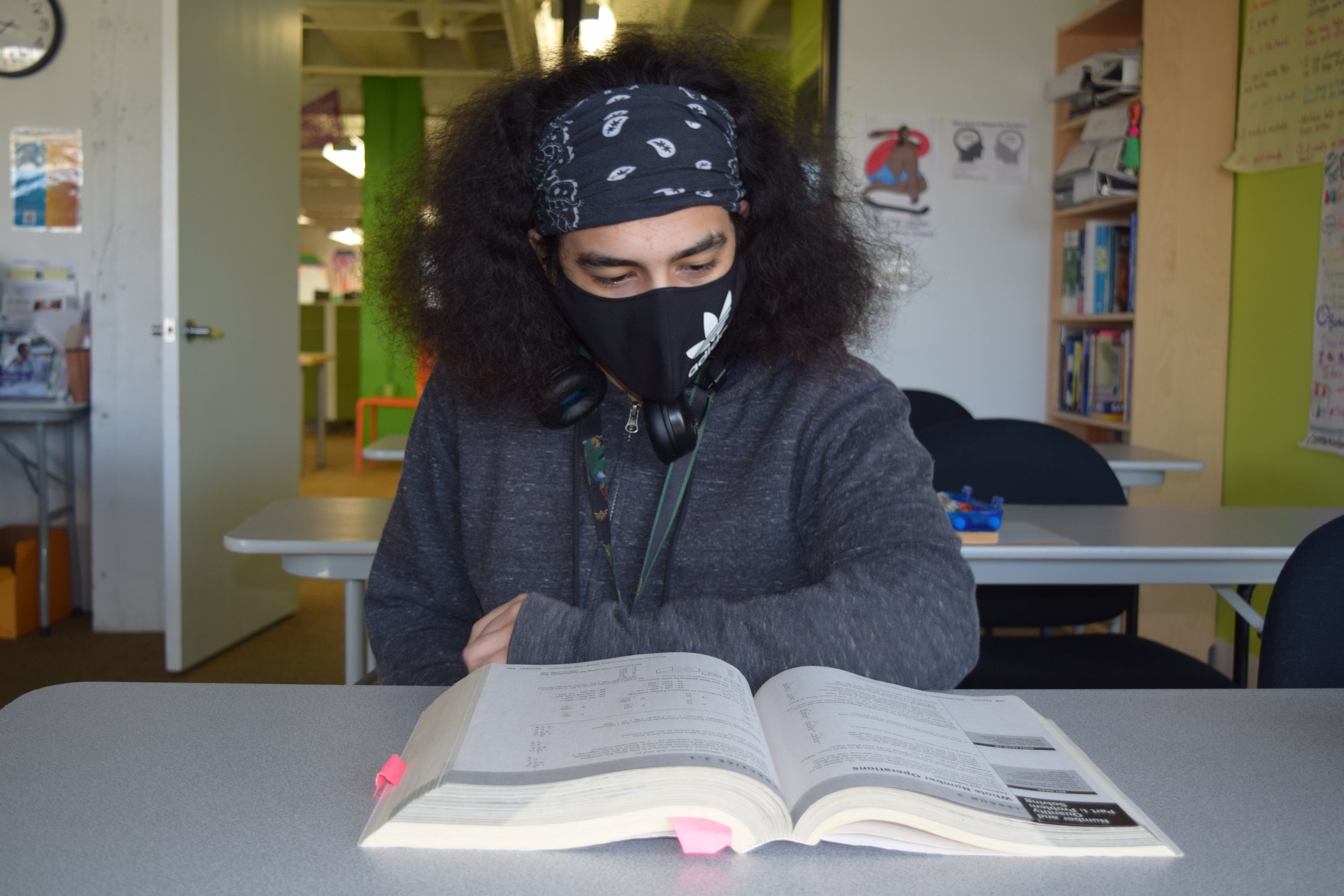COVID-19 Recovery
Mayor’s Children & Family Recovery Plan
In May 2021, Mayor London Breed tasked DCYF to lead the development of a City-wide Children and Family Recovery Plan with the intention of elevating and addressing the urgent needs of the City’s children, young adults, and families who have all been impacted by COVID-19. This plan will allow leaders and community to work together to fill gaps in recovery approaches and speak with one voice about the needs and strategies needed in the near and medium terms so that our families can heal and thrive. The Recovery Plan is aimed at uplifting the many beautiful, valuable, and resilient community voices that call San Francisco home and providing solution-based recommendations to alleviate their needs at the source of the issue. The Mayor’s Children and Family Recovery Plan (Recovery Plan) has three main goals:
Create a 3-5-year, City-wide strategy for children and family COVID-19 recovery to align resources, steer implementation and coordinate advocacy efforts.
Capitalize on collaborative and barrier-busting approach to COVID response that brings together multi-sector partners and collective strategy.
Leverage relationships between children, family and youth serving organizations across the City.
This plan presents a list of strategies organized by a set of defined need categories as a response to the recovery needs as voiced by children, youth, and families. It includes goals of improving the coordination of cross-departmental projects and information and the collaboration of City departments and community members. It is grounded upon a commitment to equity and recognizes the plurality and intersectionality of needs that underlie specific experiences of those who call San Francisco home.
2,366
youth surveyed
2,000+
parents surveyed
300+
children voiced their needs & rights
21
parent & youth focus groups
33
youth participatory action responses
76
parent/youth intercept interviews
500+
stakeholders
100+
hours of stakeholder input meetings
13.5
hours of Task Force meetings
Strategies
Access/Navigation & Systems Change
“Last year was hard. People felt abandoned by the government. Very hard to have faith in a lot of things. At such a young age you don’t want to be pessimistic, but you can’t help it sometimes.”
Safety & Healing
“I would feel more safe if people helped each other and we could depend more on one another.”
45%
of survey respondents reported feeling safe from violence in their neighborhood
50%
reported feeling safe on public transportation
Physical Health
“They’re sedentary right now & eating a lot. It was important for me for them to move with physical activity. They only wanted to be on screens & eating. Even if we as parents wanted to push, they needed structure & program.”
59%
of survey respondents felt that the pandemic had a negative effect on their child’s health.
Mental Health
.
“Parents are left out of the equation for mental health. It would be nice to get free counseling services for parents available to parents, even marriage counseling would be beneficial.”
65%
of survey respondents felt that the pandemic had a negative effect on their child’s mental health.
65%
of survey respondents felt their child will need additional mental health or emotional support this year.
Concrete/Material Needs
“Right now our greatest need is always food. [Child] is growing like a weed and loves to eat….just keeping food in the house is a huge challenge right now.”
40%
of survey respondents reported needing help finding a job
36%
of survey respondents reported needing help with back rent
Family Support
“I was out of work for six months during the pandemic. I was so frustrated and concerned about how much they were fighting when they were home.”
57%
of survey respondents felt that the pandemic had a negative effect on their child’s behavior at home.
50%
of survey respondents felt they did not have support for parenting stress or for learning parenting skills.
Childcare
“Our greatest need would be After school childcare. We do not have a plan for that and may have to miss school due to parent working and living too far walking by herself.”
37%
of survey respondents were not fully happy with the childcare they have for their 0-5 year-old child
Unfinished Learning
“I think with COVID, going to [program] was the perfect opportunity to break out my shell again because I feel like with COVID a lot of people kind of lost their social skills being alone by themselves all the time.”
78%
of survey respondents believe their child will need additional learning supports to succeed in school this year.
New & Expanded Learning
“Everybody learns in a different way, and most of us learn through visual, and then through Zoom, it’s hard to see and it’s hard to understand, because you can’t really get... the teachers here don’t really verify what we’re supposed to do through Zoom, because they expect us to already know about all this technology, just because we’re older and we have phones, but we don’t really know.”
Recommendations
-
Improve systems coordination by creating an agency to streamline and coordinate funding, services, and family service provider provider information and developing a range of accessible service entry points.
Improve service delivery by stabilizing the non-profit workforce and developing hiring qualifications and program standards, standardizing workforce training with a pipeline and training curriculum, revising eligibility requirement, and expanding and diversifying preventative supports for mental health.
Reach communities and build trust through cross-department information coordination, standardizing city-wide data formats where possible, centralizing public-facing service inventory information, and empowering communities to be a part of information-sharing through campaigns and community input efforts.
-
Promote the ability for families to feel safe in their community by:
Affirming the city and business community’s commitment to safety through the expansion of “Open to All” campaign, safe space projects, and the Safe Passage model.
Creating safe travel opportunities by investing in safe, slow streets, particularly in dense parts of the City with many families and by investing further in safe rider programs such a the MUNI ambassador programs on routes used for school and youth access.
Increasing awareness and funding for programs that support LGBTQ youth, families, and dating violence.
Creating safety strategies to address conflict in digital spaces.
Prevent violence and encourage healing by encouraging neighborhood cohesion and a sense of belonging by expanding programs that beautify physical environments, hiring and empowering youth, and continuing/expanding neighborhood events. Streamline the process for businesses to open empty storefronts and create a neighborhood by neighborhood plan for safety assets and a communications approach.
-
Expand access to free healthy food and opportunities for physical activity, co-locate primary care services, increase family resource centers to assist with family health needs, and dedicate funding for city-wide preventative health education.
Supporting the overall wellness of children, youth, and families by working directly with youth to identify their health needs and investing in health outreach and education through creation of safe spaces and campaigns.
-
Expand mental health providers capacity by supporting the mental health workforce, allocating flexible funding to develop community desired programming, and streamline communication and collaboration among specialty mental health systems.
Increase mental health supports for children, youth, and families by providing mental health training, integrating mental health learning into schools curriculum and after-school programming, and increasing funding for specialized services.
-
Affordable Housing, Housing Stability, and Shelter
Continue expanded eviction prevention, problem solving and housing stabilization strategies with a focus on those most at risk of homelessness or housing instability.
Fund more medium-term housing resources for transitional age youth, sustain the expansion of family and TAY shelters, and create more “Moving On” options for families and TAY who are formerly homeless and living in permanent supportive housing.
Expand and improve the quality of housing options as part of Homelessness Recovery Plan, especially for families with children, TAY BIPOC households, and transgender folks.
Food Security
Sustain food support programs that expanded during the pandemic, increase the access and options for health and affordable food, partner with philanthropy to increase funding for food access, and expand urban agriculture programs.
Economic Stability
Expand federal tax credit locally, sustain and evaluate expanded jobs programs and employment initiatives, and reaffirm Sanctuary City policies and financial assistance services for undocumented workers with local dollars.
Implement a guaranteed income program with a focus on low-income populations at critical life transitions (e.g., Families with children 0-3 and parenting TAY).
Develop a City-wide workforce strategy focused on child, youth, and family development programs
-
Increase access to family supports for parents and caregivers by investing in culturally responsive, multi-generational family programming, advocating for extended support for family leave, and creating connections between school and family service providers.
Expanding capacity of family supports by combining state Family First Prevention Services Act funding and local dollars and increasing funding to bolster access to centralized preventative navigation and referral through existing programming.
-
Increase the availability of childcare options by investing in childcare workforce and expanding the time(s) and location of childcare.
Increase access to childcare for parents and caregivers through expanded financial assistance/guaranteed income approaches and coordinated information-sharing.
Increase the stability, quality, and coordination in the childcare field by providing specialized workforce training and resources and investing adequate funding to childcare providers.
-
Providing additional learning supports that children and youth need by expanding existing OST and Rec and Park After School Programming
Expand coordinated training and capacity building for individualized academic tutoring, English learners language support, mental health support, and online engagement training.
-
Increase the effective usage of technology and digital learning tools by promoting digital safety education and providing devices and internet connectivity to all children, youth, and families in need.
Increase the opportunities for youth to participate in civic engagement by expanding leadership and civic participation programs, providing meaningful programming that allows youth to develop decision-making skills, and supporting caregivers to raise civically engaged youth.
For more information, contact abigail.stewart-kahn@dcyf.org.














